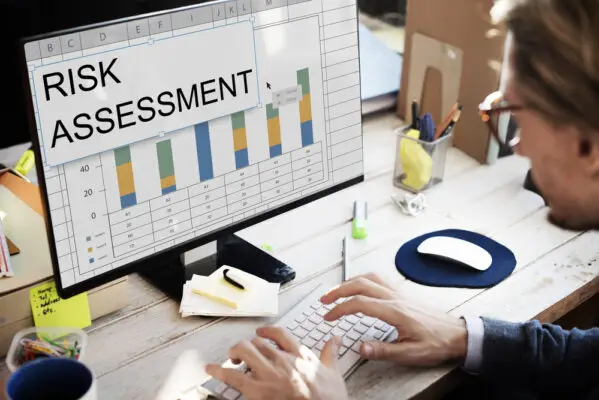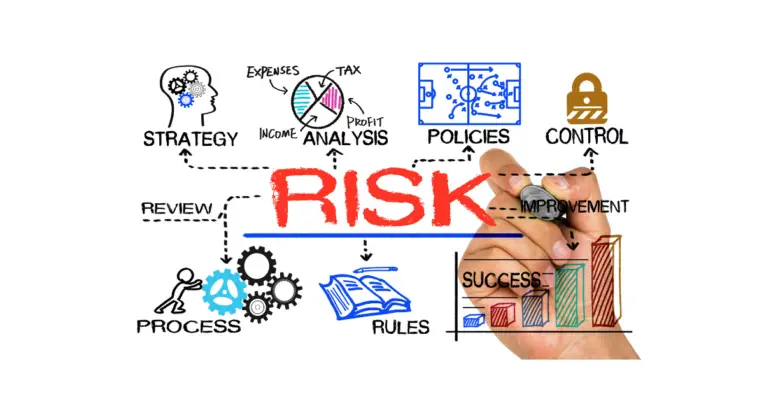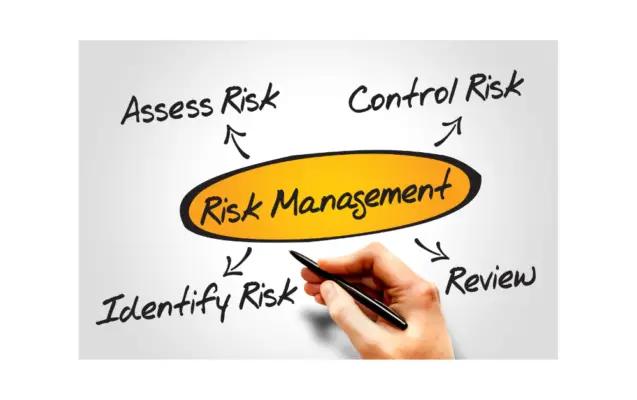Conducting a risk assessment is not always easy, but some steps can be followed to ensure it is done correctly. First, identify the hazards that could potentially cause harm. This can be done by looking at the work environment and identifying anything that could potentially cause harm.
Once the hazards have been identified, it is important to assess the risks associated with each one. This includes looking at the likelihood of the hazard causing harm and the severity of the harm that could be caused.
Finally, once the risks have been assessed and prioritized hazards, it is important to implement control measures to manage them. This might involve changing the way work is carried out or providing training for employees on how to work with hazardous materials safely. By following these steps, a risk assessment can be conducted to help control the risks in any workplace.
Risk assessments are the key component of an analysis of risk. Risk analysis involves several stages to find and analyze potential risks and issues that could affect the business. The process continues, and updates are needed whenever they are needed. This concept is interlinked and may be used individually.
Risk Communication involves expressing opinions about risks to concerned parties. Risk management refers to proactive management and evaluation to prevent and mitigate hazards. These two factors combine with a risk evaluation and help make intelligent decisions.
The biggest risk in a rapidly changing society is never to risk”. Although the advice is no longer new, it will help you understand that your organization doesn’t want to take risks but thorough risk assessment.
It can often be difficult to determine which steps, policies, and procedures are particularly dangerous. The risk assessment sometimes starts when a hazard occurs, resulting in health and safety risks.
Every organization has unique risks, and vulnerabilities must be considered when creating a risk management plan. However, some general steps can be followed to help you get started. This article will outline the basic steps for conducting a risk assessment and provide tips for mitigating risks. Let’s get started.

What is Risk Assessment?
A risk assessment identifies hazards that could negatively impact an organization’s ability to conduct business. It includes the analysis of data to determine the level of risk and the potential for loss.
Risk assessment aims to identify risks and develop plans to mitigate them. Risk assessment is a vital part of any organization’s risk management strategy. Without it, organizations cannot effectively identify and address risks. A well-designed risk assessment program can help organizations avoid or minimize losses and protect their reputation and bottom line.
During risk assessment, an organization reviews risks and identifies the differences between riskiness and risk. Hazards are anything causing harm, such as work accidents, emergencies, toxic chemicals, worker disputes, or stress.
A risk is a probability that risk may cause injury to a person. When developing your risk assessment strategy, it is essential that you determine the risk of potential risks and determine the likelihood they occur. Risk assessments are primarily geared toward assessing the risks of an organization.
Examples of risk assessment include; Cyber Risk defines the risk of financial loss for a business from the failure of the information technology systems in question. A company’s cyber risk is analyzed to determine whether a cyber-security incident has been identified or not and outlines how it could be prevented by reducing the risk of causing unauthorized access, loss of profit, or damage to customers.

Preparing for your risk assessment
Before beginning your risk management process, you should determine the scope of the analysis, the necessary resources involved, and the regulatory requirements. Determine processes, activities, functions, and locations of the risk assessment.
It is important for you to define how much an assessment will cost and how much time and resources are involved for your work to be accurate and efficient. How can I get a complete risk assessment report? All the necessary staffing and resources are allocated for developing, implementing, and controlling the risk assessment.
Any business that wants to be successful needs to have an effective risk assessment team in place. This team is responsible for identifying and assessing health and safety risks within the workplace.
They will also provide recommendations on how to minimize these risks. A risk assessment form is a key tool that the team will use to identify potential risks. It is important to have an up-to-date form so that the team can quickly identify any new or changed risks.
The team will also conduct regular reviews of the form to ensure that it remains accurate. An effective risk assessment team is essential for any business that wants to create a safe and healthy working environment. Without this team in place, businesses are exposing themselves to a range of potential dangers. These dangers could result in serious injuries, fatalities, or even legal action being taken against them. As such, it is clear that having an effective risk assessment team is extremely important.
Managing risks is a vital part of any business operation. By identifying potential hazards and implementing control measures, businesses can protect their employees, customers, and Physical assets. There are many different approaches to risk management, but all effective risk management plans share certain key components.
One of the most important steps in risk management is hazard identification with the objective of occupational safety. Identify potential hazards, and assess the likelihood and severity of each type of hazard.
Once potential hazards have been identified, businesses can develop and implement control measures to mitigate the risks. These risk control measures may include changes to existing processes or the introduction of new safety protocols.
Conducting a Risk Assessment
When you collect all the relevant information and determine the scope of the risk assessment, it moves into preparing an actual risk assessment. Risk analysis identifies operational threats, improves safety performance, and reaches the organization’s objectives.
The effectiveness of risk assessments depends on three key elements – identification, evaluation, and risk analysis.
Risk identification
The process of finding, recognizing, and describing risks. One way to identify a risk source might be by asking yourself: “what could go wrong?” Acknowledging this question will encourage one to think about what other factors may contribute, leading an organization down an unexpected path. It’s a process that helps to identify what risks exist for an organization and how to be managed them.
Identification determines what needs assessing; whether these exposures are significant in terms of their impact and probability. Understanding risk identification is not limited to a definition; it also needs to understand why risk identification is essential, who identifies risks, the ways of identifying risks, and various types of risks.
Examples of hazards include; biological hazards identified to protect workers.
Also, identify different risk identification methods. Identify hazards that are aligned with the risk criteria example, including safety hazards, operational risks, and health administration.
– it will help an organization to decide how much resources are required for risk mitigation.
– it provides a basis on which to begin managing risk.
– It helps to formulate a risk management policy.
– Helpful in designing risk control strategies.
– It may also help to evaluate if there are any unidentified business opportunities.

Risk Analysis
Risk analysis is evaluating risks and making decisions on how to handle them best. Risk analysts consider all angles, from causes to consequences and likelihoods, to assess what would be the effective treatment for a given situation. For informed decision, it needs to be done in sequence in which exposure is reviewed after being determined as significant.
The determination of the level of risk analysis measures happens in two dimensions, analysis of risk without control. That is inherent risk rating, alternatively, analysis of risks after controls, residual risk rating levels. The risk analysis performed uwas sing tools like cause and effect diagrams, fault tree analysis, failure mode and effects analysis (FMEA), decision trees, or scoring rules.
In addition, all measurements are performed per acceptable risk levels defined by an organization to which it is relevant. It involves subjective estimates of probability, severity, and impacts, all part of assessing risk. Particular hazards and potential risk assessments can be subjected to new processes.
Risk = Threat x Vulnerability x Asset
Although risks are represented in this way as mathematical formulas, they are not numbers, they are mathematical structures. If we want to understand how a hacking attack could impact a particular computer system, let’s see what we can learn.
Your system is extremely vulnerable due to a firewall, no security software, or a critical asset, so your risk is extremely high. Despite the risk being minimal and you have excellent defense systems, your risks are medium. This not an exact mathematical formula but an example to understand the relations of the components that feed into the determination of risk:
The risk level is determined to ascertain appropriate control requirements that must be established by management decisions based on the evaluation of risk. The higher the threat posed by a given risk event, the more effort should control it.
For quantitative risk, the most critical aspect of the process is the vast amount of data involved. In some cases, this may include hundreds or even thousands of different pieces of information. The risk assessment process is a multifaceted project.
It has many purposes for an organization providing a basis for managing risks. Designed to help an organization reduce operational risks, improve safety performance and achieve objectives. However, performing a practical risk assessment comes down to three core elements: risk identification, risk analysis, and risk evaluation.
Risk Evaluation
Risk evaluation is comparing risk analysis with established criteria to compare risk analysis with established standards. It includes taking account of context, including tolerance levels.
The purpose is to help make decisions based on outcomes of risk analysis and identification about which risks need treatment and what priority they should have when it comes to implementing these treatments. Risk evaluation involves looking at how high-level risks are compared against their corresponding established levels.
This comparison will dictate whether or not there’s any need for the treatment depending on each case individually; therefore, taking into account multiple variables such as tolerance towards those particular types that might be found risky.
It’s best to use probability and magnitude here to compare so that the risk evaluation can be calculated in quantitative terms. However, if one isn’t readily available, they may still use qualitative methods such as low high, or average. The risk evaluation will depend on how much weight each level gives.
Overall risk evaluation is a qualitative and quantitative comparison to rank them accordingly. This includes looking at the risk analysis done earlier to determine how high levels of risk need treatment and which ones should be treated first, depending on the magnitude and probability factors.
The risk assessment includes the following steps: identification, analysis, and evaluation. The final step will be to implement the treatment. Treatment can involve reassessing the risk and possible implementation modification if deemed necessary.
It will also include documentation of the risk assessment process and including lessons learned for future referrals. Risk assessments are usually documented in a particular format that tells how information is gathered and then analyzed into an aggregate score.
After identifying the potential dangers, you should consider how likely the risk could be and how severe the effects would become. This tool helps you identify where and why risk reductions should be taken as a priority. Learn how a risk assessment chart can be helpful during your risk assessment journey.
Existing controls will be evaluated against particular hazards and corrective measures to control hazards. The safety management plan will outline control hazards, i.e., Administrative controls, engineering controls, and hazard control in the risk matrix. The ongoing process of mitigating new hazards and obvious hazards.
Risk Mitigation
Risk mitigation is the process or actions taken to reduce or eliminate the risk of something happening. This can be done through various methods, such as insurance, safety measures, and investment. Individuals and businesses can protect themselves from potential losses by taking steps to mitigate risk.
Risk mitigation is an important part of any risk management plan, as it can help to reduce the financial impact of an accident or event. Risk mitigation can also help improve employee safety and morale for businesses. By taking steps to reduce the risks associated with their work, businesses can create a safer workplace for their employees.
It’s important for everyone to be aware of the hazards that might be present in their everyday lives. We all face risks daily, but some are more serious than others. That’s why it’s important to prioritize hazards and assess their risks. And by conducting a risk assessment important, we can identify the potential consequences of a hazard and plan accordingly.
Risk Monitoring
Assessing and monitoring risks is vital to any organization’s risk management strategy. By identifying potential risks, organizations can take steps to mitigate or avoid them altogether. There are a variety of methods for risk assessment, but two of the most common are scene analysis and fault tree analysis.
Scene analysis involves breaking down an event into its component parts to identify possible risks. On the other hand, Fault tree analysis focuses on identifying conditions that could lead to an adverse event. Once potential risks have been identified, they can be monitored to assess their likelihood of occurring.
This information can then be used to develop plans for mitigating the risks. Organizations can reduce the likelihood of encountering major problems by implementing an effective risk monitoring strategy.
Review your assessment and update if necessary
As equipment, process, and personnel become available, each threat carries new risks. Keep up with risk assessments as they become more complex with the new risks.
A regular self-assessment is a great way to gauge your progress and identify areas where you may need to continue working. It can also be helpful to review your assessment periodically and make necessary updates.
This helps to ensure that your assessment accurately reflects your current skills and knowledge. When reviewing your assessment, consider whether you have made progress in the areas you identified needing improvement.
If so, you may want to update your assessment to reflect your new ability level. If not, you may need to continue to focus on those areas to improve. Either way, periodic assessment reviews can be a helpful tool in keeping track of your progress.
Conclusion
Risk assessment is an important step in any business venture. By understanding the risks associated with a new product, you can take steps to mitigate those risks and ensure your success. In this blog post, we’ll walk you through the basics of risk assessment so that you can apply it to your own business ventures.
-Risk assessment begins by identifying all potential risks associated with a product or venture. This includes both known and unknown risks. Once all the risks have been identified, they are assessed for severity and likelihood of occurrence.
The next step is to develop strategies to reduce or eliminate each identified risk. This process should be repeated regularly as new information about the product or venture becomes available. Risk assessment is essential for any business owner looking to minimize risk and maximize success. What is your company’s current strategy for identifying and evaluating risks?
Have you conducted a risk assessment for your latest product launch? If not, now is the time to start!
Chris Ekai is a Risk Management expert with over 10 years of experience in the field. He has a Master’s degree in Risk Management from University of Portsmouth and is a CPA and Finance professional. He currently works as a Content Manager at Risk Publishing, writing about Enterprise Risk Management, Business Continuity Management and Project Management.

